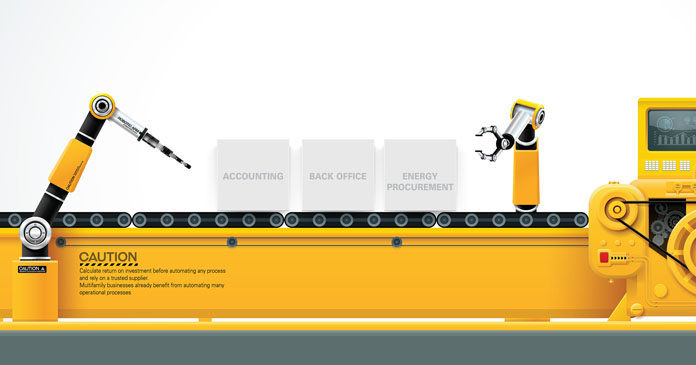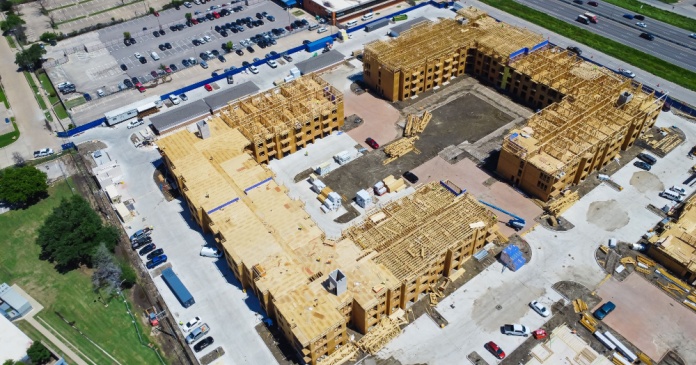
One of the largest failings, in our estimation, is that organizations aren’t spending the time necessary to deeply understand the work they’re considering automating. They aren’t deconstructing jobs so the specific tasks that can be automated can be identified.
And without deconstruction, companies risk significant collateral damage and minimizing their ROI as they attempt to automate entire jobs.
So how do you go about deconstructing jobs in order to identify how best to deploy automation against specific tasks and the role said automation might play?
There are many approaches to deconstructing and categorizing the component activities of jobs, but we believe they can be illustrated with three fundamental work characteristics:
Repetitive vs. variable work
Repetitive work is often predictable, routine, and determined by predefined criteria while more variable work is unpredictable, changing, and requiring adaptive criteria and decision rules.
Most work tasks of a credit analyst are repetitive, for example. They gather and synthesize similar data for every loan application. They look for the same red flags in each piece of customer data that are pulled from bank records, credit rating agency data, government records, and social media.
Generally, repetitive work is more automation-compatible with well-established solutions such as robotic process automation (RPA). RPA can perform such analyses as much as 15 times faster, with almost no errors.
On the other end of the continuum, the work of an human resources (HR) consultant is highly variable. Every client situation is different and every problem is unique. HR consultants work with analytical tool kits, change management frameworks, and process design techniques that must be customized to diagnose unique problems and solutions. Such work is generally less amenable to automation, but advances in cognitive automation might automate some analytical tasks, or “learn” from previous client engagements.
Independent vs. interactive work
Independent work requires little or no collaboration or communication with others, while work performed interactively involves more collaboration and communication with others, and relies on communication skills and empathy.
An accountant preparing statutory reports for regulators using prescribed templates and decision rules is doing primarily independent work. They can gather data from various sources, synthesize their findings, apply accepted analytical tools and produce reports with their findings with no need to engage with another person. A good portion of such work is automation-compatible using well-established methods.
For example, RPA could do the information gathering and synthesis while artificial intelligence could do much of the analysis and produce certain basic reports.
A call-center agent, on the other hand, is doing interactive work, matching their work to each caller’s unique emotions, needs and style of communication.
Interactive work is generally less automation-compatible, but advances in artificial intelligence and sensors can detect the caller’s emotions and analyze the request to give the call-center employee relevant information to better serve the caller with greater empathy and care.
Physical vs. mental work
Physical work is work that is primarily manual in nature, requiring manual dexterity and, often, strength while mental work requires one’s cognitive abilities.
The work of a manufacturing line assembler is physical work. The assembler might gather different parts, weld them together, inspect the work and move the finished product to another part of the factory. Such work lends itself well to social or collaborative robotics that are the result of combining AI, sensors, and mobile equipment.
A collaborative robot could gather and move parts and weld them together to degrees of precision that greatly exceed that of a human being. On the other hand, the mental work of an accountant, as we have described in the section above, can often be replaced or augmented by RPA or cognitive automation.
With these three categories in mind, companies can better understand the work they’re thinking about automating and how specific jobs break up into individual tasks.
The next step is then to ask: Are these tasks able to be automated, technically speaking? Are these tasks grouped into a single job and, if so can, these activities be separated with minimal breakage? And what is the expected return from automation in terms of productivity, speed to capability, cost, risk, etc.?
These are just a few of the questions companies need to ask, and only one part of a full automation strategy. But they avoid the trap of treating all work as the same, and equally eligible for automation. Some work is harder to automate than other work and—just as important—some work makes sense as a single job while some work is able to be split into different tasks.
Authors Ravin Jesuthasan is managing director at Willis Towers Watson. He is the coauthor of the new book Reinventing Jobs: A 4 Step Approach for Applying Automation to Work and articles on work, automation, and human capital.
John Boudreau is professor of management organization at the University of Southern California’s Marshall School of Business and Research Director at the university’s Center for Effective Organizations. He is the author of books and articles, and coauthor of Reinventing Jobs: A 4 Step Approach for Applying Automation to Work.














